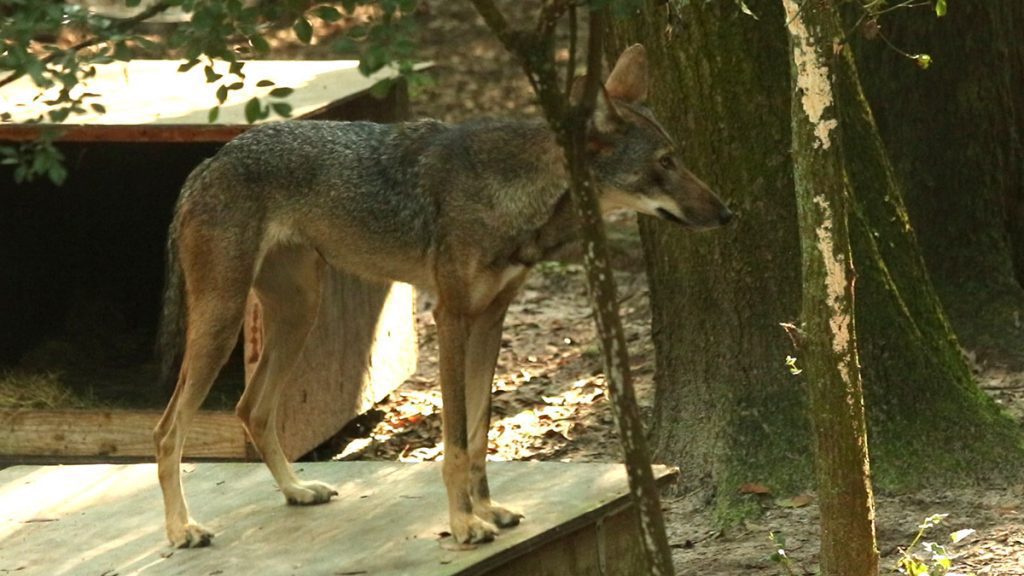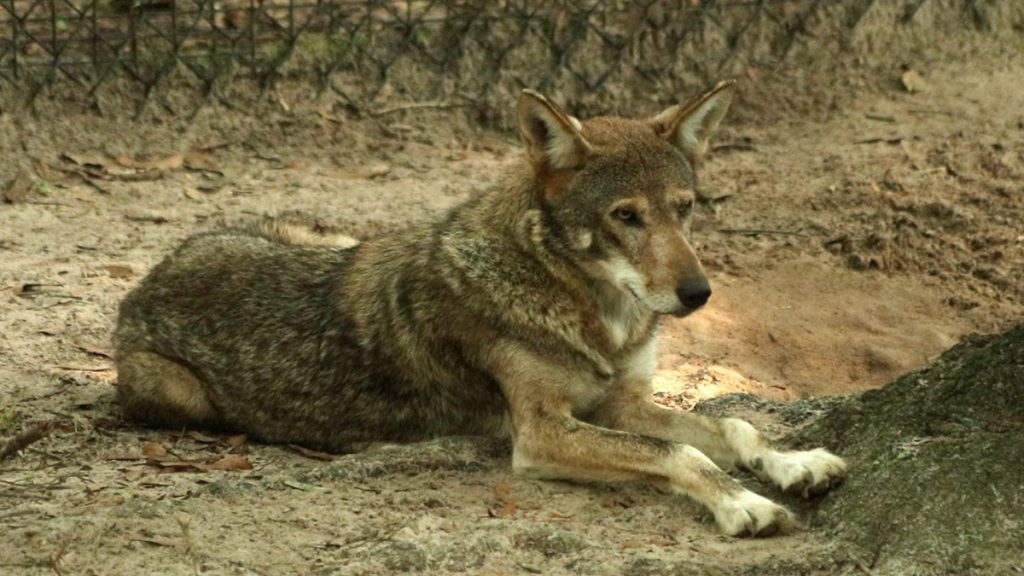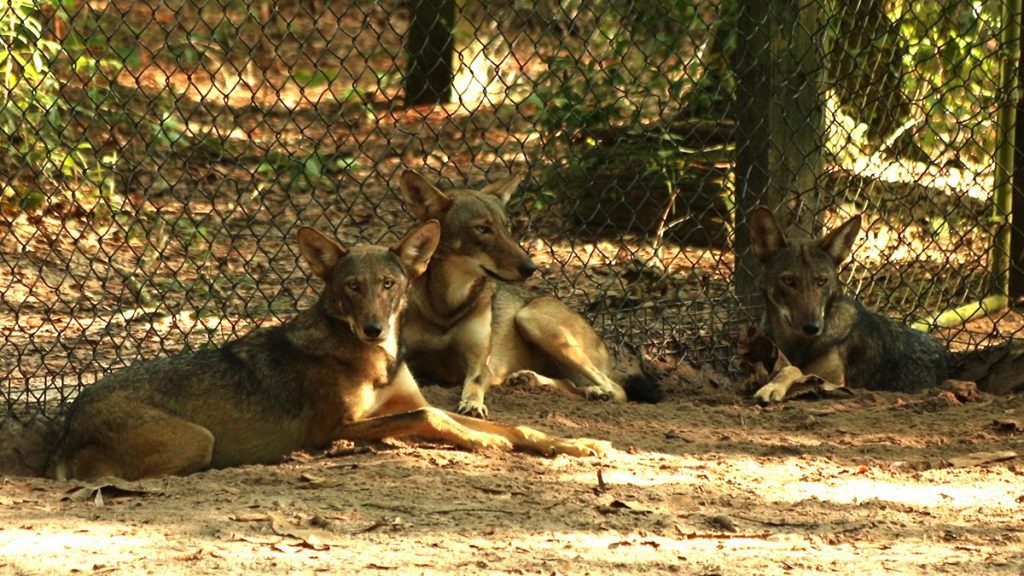At a critical time for the red wolf wild population, some of the Tallahassee Museum’s red wolves are leaving us.
Subscribe to the WFSU Ecology Blog to receive more videos and articles about our local, natural areas, and subscribe to the WFSU Ecology Youtube Channel
Rob Diaz de Villegas WFSU Public Media
Today, the female red wolf pup didn’t like me. With every visit I make to the Tallahassee Museum to shoot the pups, I see something new from them. Last time I was here, they all came and marked their territory in front of me (video I chose not to share). Today, the girl pup looked at me and kind of grunted, half charging me (I was on the boardwalk above her) and then running to the fence with the other pups. She did this maybe ten times.
Perhaps she knows that she’ll be leaving the Tallahassee Museum soon.
Head animal curator Mike Jones and assistant animal curator Suzie Buzzo just got back from the Red Wolf SSP meeting in Little Rock Arkansas. The Red Wolf Species Survival Plan is a group of zoos and other facilities that are a part of the red wolf breeding program, along with representatives from the US Fish and Wildlife Service. They meet once a year to determine new breeding pairs- so we have news on where our wolves are going. And with proposed changes to the protections in the red wolf wild population this year, there was a lot to talk about at the meeting.
We last looked at the situation regarding the wild population in our post for the Red Wolf Puppy Show in April. But the comment period is almost over (edit July 31, 2018- comment period ended yesterday), and the fate of the dwindling population of wild wolves, located entirely in the Albermarle Peninsula in North Carolina, will soon be decided.
We’ll talk about that in more detail soon. But first, I know our local audience wants to know the fate of red wolves locally.
Where are the Tallahassee Museum Red Wolves Going?
Female Pup: Wolf Conservation Center | South Salem, New York
As Mike and Suzie say, females are more valuable than males within the breeding program. Out of 83 breeding age females, the girl pup ranks 23 in terms of genetic value. Because the breeding program started with 14 individuals, the SSP keeps a close eye on genetics.
They look at three main factors:
- Genetic deformities. They definitely won’t breed individuals with known genetic issues, and they exclude blood lines that have a tendency towards these issues.
- How genetically represented are individuals? Before last year’s breeding season, the red wolf mom ranked high enough to be paired with a mate. Now that she’s had her second litter, her DNA within the 240+ red wolves in existence is well represented. Her rank is now 58, below the cutoff for breeding this year.
- How genetically related are any two individuals? The Red Wolf SSP has kept careful track of the lineages of their wolves. Decades after the program started, all of that data is kept electronically. Now, when they decide pairs, they enter the numbers for pairs of highly ranked individuals, and the computer program tells them how related they are.
Female pup will breed differently than her mother.
“It’s something that’s been pretty successful with the Mexican wolf breeding program,” Suzie says. “They’re actually going to put her with two males, and give her her choice.”
The Wolf Conservation Center is not a zoo like the Tallahassee Museum, so visitors won’t get to watch the two three-year-old wolves compete for the chance to mate with the female pup. Suzie thinks that her defensive posturing towards me today shows that she’s ready to be a good, defensive mother.
Red Wolf Dad: Alexandria Zoo | Alexandria Louisiana
The red wolf dad currently ranks 17 out of 111 possible breeding males. So he’s heading down the road to where there’s a genetically valuable female. Unlike mother red wolf, last year’s litter was his first, and so his DNA is still not too widely represented.
Mike and Suzie were happy to have him close by, and at a zoo with which they have had a good working relationship. The Alexandria Zoo is part of 50 different SSP programs.
Mom and Her Three Male Pups: Tallahassee Museum
Mom has contributed eight wolves to the breeding program, and so her DNA is well represented. Her boys are tied for 49, which is actually above the cutoff for males in the program. But with only 33 females above the cutoff for breeding this year, they just weren’t valuable enough. So they’re staying put.
Even without wolf dad here, mom has to have a contraceptive implant this breeding season. This way, she won’t go into heat and possibly mate with her own offspring.
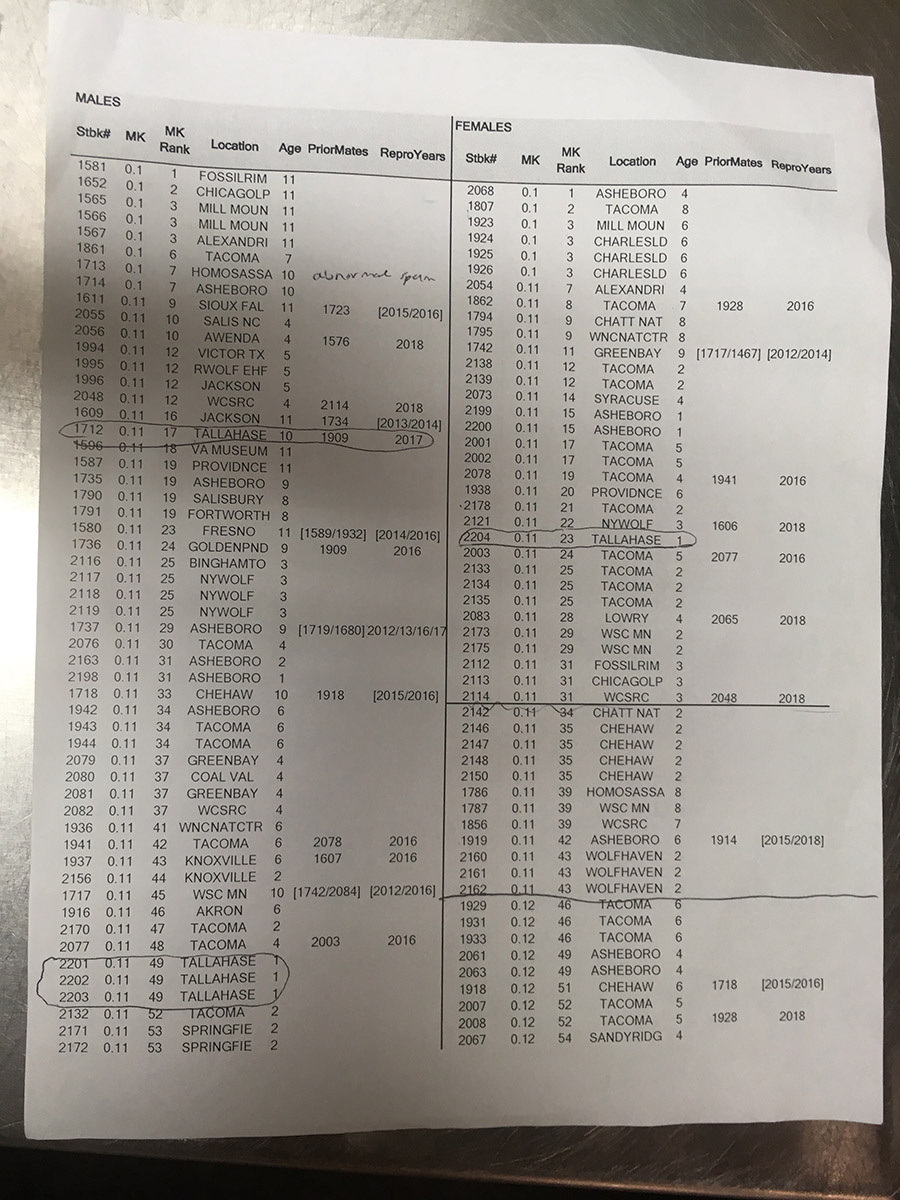
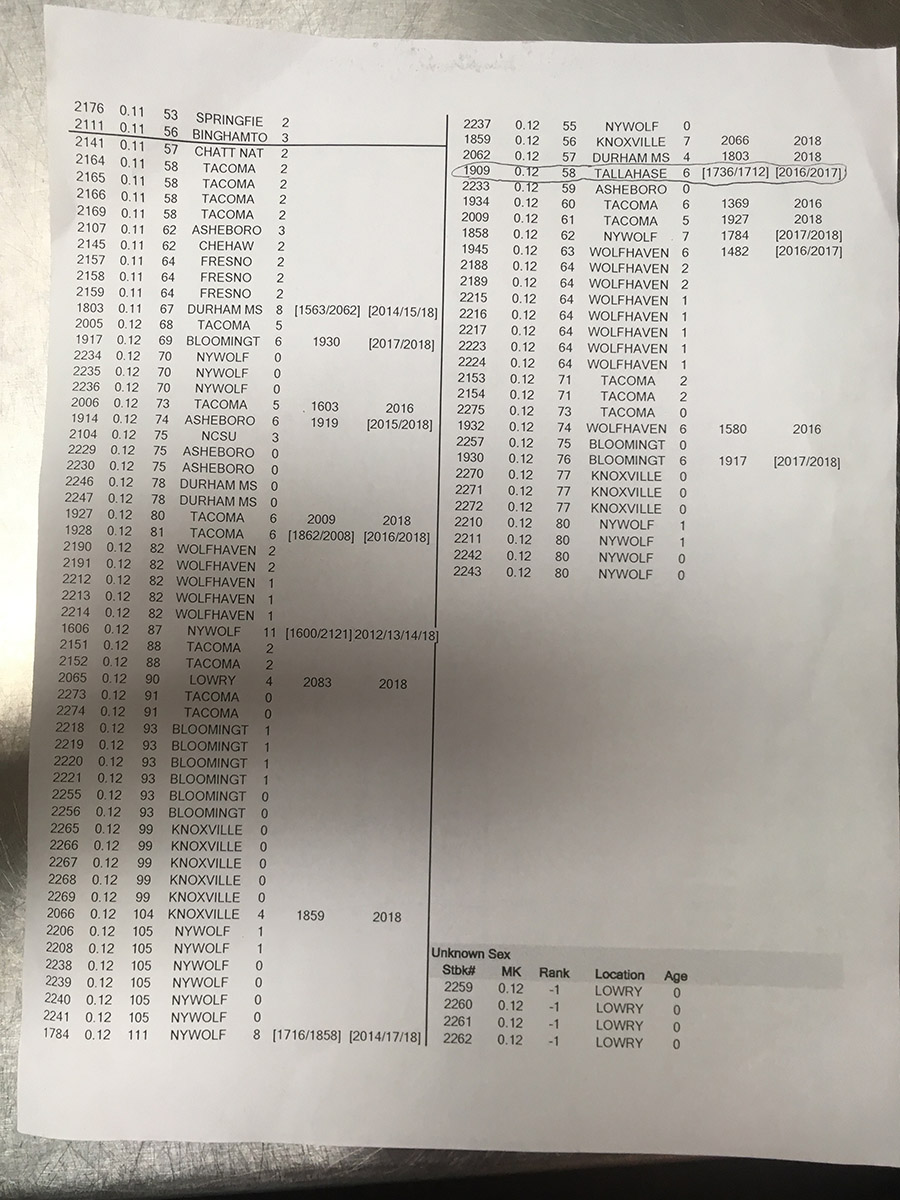
Click to see where all the wolves ranked. All wolves in the SSP are assigned a number they keep for life. You can look at all of this year’s recommendations here.
The Future of Red Wolves in the Wild
Just a few years ago, there were around 130 wolves in the wild. Now, there are about 30.
After having gone extinct in the wild in the 1970s, the breeding program had built the population, and wolves were regularly released into the Alligator River National Wildlife Refuge in North Carolina. The Alligator River Refuge is 150,000 acres, and nearby Pocosin Lakes National Wildlife Refuge is 110,000 acres. It’s a lot of land, but as red wolves formed larger packs, and subsequent generations broke off to start their own packs, they spread out. As WFSU-FM’s Lynn Hatter said while interviewing Mike and Suzie, “[a wolf] doesn’t know it wandered off” the Refuge.
Once the wolves were off the Refuge, some were shot on farmland. Landowners claimed to confuse them with coyotes, which, like the red wolf, had been protected. The coyote lost its protection, and the federal government chose not to prosecute the the shooting of wolves off Refuge. Wild releases stopped, and the breeding facilities reached capacity. The program was in limbo.
Now, the US Fish and Wildlife Service is looking at officially reducing protections for wolves that leave the Refuges. Over 12,000 people have left comments so far, and Monday, July 30 is the last day. Again, you can leave a comment here. And you can read more about the proposed changes here.
“We all need to make our comments to support the red wolves.” Suzie says.
Lynn Hatter will have a story on the wolves (and now it’s up), and on yesterday’s sea turtle release at Shell Point, on tonight’s Capitol Report, with an eye towards possible changes to the Endangered Species Act.

